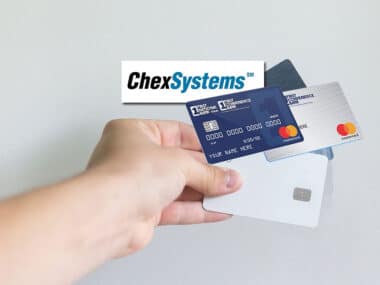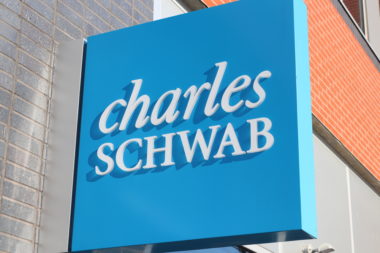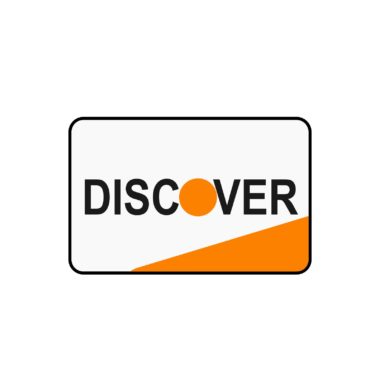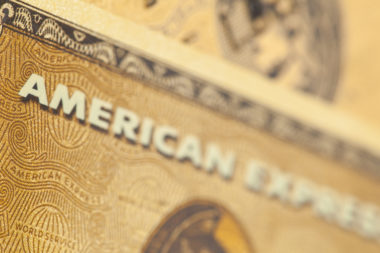Typically, banks have two main roles: to lend money out and to keep it safe. Account holders are able to choose from the different bank account types that best fit their banking needs.
It’s important to keep in mind that different banks offer varying ranges of account types and their offerings can influence your decision about who to bank with. Being aware of the ins and outs of each type of bank account can help you gain a better understanding of what happens to your money.
Table of Contents
Interest Bearing vs. Non Interest Bearing
An interest-bearing account yields a percentage of the total amount of money in the account. The percentage of money that an account will yield is called interest. The bank adds this interest to the total balance either annually, quarterly, monthly, or daily. Compound interest is money that your account earns on top of the interest that has already accrued.
Banks determine interest rates based on guidelines set by the Federal Reserve. Another way a bank may determine their interest rate is by comparing their numbers with their competitors and determining whether they want to offer a special interest rate incentive to help entice people to open an account with them.
In an account that is not interest bearing, money remains stagnant and does not accrue interest. An investment account, such as an IRA, qualifies as a non-interest-bearing account, but investment accounts earn dividends. The most common type of non-interest-bearing account is a checking account.
Checking Accounts
A checking account allows you to make payments and purchases with hand-written checks, e-checks, and a debit card. A checking account allows individuals to easily and quickly access their available funds.
Benefits and Features
Some of the benefits and features of a checking account include, but are not limited to:
- FDIC insured: The Federal Deposit Insurance Corporation (FDIC) insures checking accounts with accredited banks for up to $250,000. Credit union accounts are insured by the National Credit Union Administration (NCUA).
- Fraud protection: As per the Electronic Funds Transfer Act, your checking account must include fraud protection.
- Debit card: This is a small card that can be used to make payments and purchases either at the store or online, as well as to withdraw money from your bank account at an ATM.
- Online banking: With your account number and identifying information you’ll be able to establish an online bank account through which you can manage your other accounts such as your checking and savings.
- ATM access with no fee: You can withdraw money from your bank’s ATM without paying any additional transaction fees.
- Zero minimum balance: Although some banks have zero balance checking account options, this doesn’t apply across the board. If your bank doesn’t require you to keep a certain amount in the account, they may charge you a monthly maintenance fee.
- Routing information: The bank will supply you with an account routing number so you can make payments numerically, online and over the phone, rather than writing a check or using a debit card. By doing so, it pulls funds directly from your account and may take 24 to 48 hours
- Overdraft protection: To protect yourself from overdraft fees, which occur if you overdraft on your account using your debit card or automatic withdrawal, you must opt in for overdraft protection. The process for applying for overdraft protection varies with each bank; contact your local branch to see how you can apply overdraft protection on your account.
- Direct deposit: You can instruct your employer (if they accommodate it) to deposit your paychecks directly to your checking account. In order to accomplish this you will need your routing and account number handy.
- Cashback rewards or points: Some credit unions, community banks, and major banks offer cashback for your continued business with a higher-level checking account. You may even be able to receive points for making certain types of purchases (inquire with your bank for more information).
- No fees: Some checking accounts may have no fees attached, however, these types of accounts require research and inquiries with your bank.
- Online bill pay: Many banks offer this for free — you provide billing account information and the bank automatically pays your bills from your desired account each month.
- Automatic transfer to savings: Many banks include the option to make automatic transfers from your checking account to your savings.
- Withdraw money almost anywhere: If you need cash, you can withdraw money anywhere there’s an ATM — however, the ATM will charge a fee if it’s not from your bank.
Interest
Interest-bearing checking accounts are higher level accounts that require you to keep a minimum balance that will accrue interest. Rewards accounts and online-only accounts typically have the highest annual percentage yield (APY). APY is the amount of interest you’ll earn in a year.
If an interest-bearing checking account doesn’t already have a minimum balance requirement, it will have a balance you must maintain in order to start earning interest.
Fees
Many banks will waive fees for basic checking accounts if you use your card enough, open a savings account, and maintain a minimum balance, or maintain a minimum balance in the checking account itself. However, be aware that you may come across the following fees attached to a checking account:
- Monthly maintenance: The average maintenance fee is $14.13 as of February 2020.
- Minimum balance fee: Higher level accounts may come with this fee attached.
- Overdraft: According to a MoneyRates survey, the average overdraft fee is $32.30 if you bounce a check or opt to waive overdraft protection and then make a debit purchase for more than you have in the account.
- Returned deposit item: If someone writes you a check and you deposit it in your bank but it bounces, banks will charge you on average around $35 per item, however, fees vary per bank.
- Paper statement: Many banks now charge you if you want to receive statements in the mail.
- Old statements: Like paper statements for current account info, you may have to pay for any requests of old statements.
- Foreign transactions: You could pay up to 3% to process international transactions. If you’re planning on heading out of the country, consider looking for an account that has no foreign transaction fee, but be wary of the fact that these types of checking accounts may have other strings attached. .
- ATM fee: The average fee for using an ATM that doesn’t belong to your bank is $4.69.
- Stop payment fee: If you want to cancel a check or debit payment due to an error, you may pay anywhere from $15 to $30 or even more, depending on the bank’s policies.
What You Need to Open an Account
The steps you must take to open a bank account may vary with each bank. However most require that you make an initial deposit of a predetermined amount. You’ll also need personal information such as proof of address (utility bill, pay stub, tax returns) and a photo ID.
Savings Accounts
A savings account allows you to earn interest on your balance. This type of account is great for storing away cash until you need it for larger purchases or emergencies.
Benefits and Features
- FDIC insured: The Federal Deposit Insurance Corporation insures savings accounts with accredited banks for up to $250,000 (credit union accounts are insured by the National Credit Union Administration).
- ATM and online access: Just like checking accounts, you can manage your savings account via ATM or the bank’s website/app.
- Fraud protection: The same electronic transfer fraud protection that applies to checking accounts also applies to savings accounts.
- Minimum balance requirement: Some savings accounts do require you to keep a minimum balance deposited in order to avoid fees and keep the account; others don’t.
- Maximum monthly withdrawals: As stipulated by Federal regulation, you can only make a maximum of six withdrawals or transfers from your savings account per month. Violation may result in a fee or account closure.
- Automatic transfers and externally linked accounts: Through your bank’s website or app, you can set up automatic transfers to your savings account, which may help you save money, and you can link external accounts, which allows you to make automatic transfers from other bank accounts.
- No monthly fees or minimum deposit: Some banks — particularly those online — are allowing customers to open an account with little to no money in it and promising to charge no monthly fees.
Interest
The interest you earn in a savings account comes from interest the bank is charging for loans and credit card balances. In other words, by maintaining a savings account, you’re helping the bank lend other people money, and you’re earning interest on those loans.
Interest you earn will typically be fairly miniscule. As of April 2020, the average interest rate for a traditional bank savings account is 0.07%.
Look for a savings account that pays interest more frequently. Some only pay annually, but others pay quarterly, monthly, or even daily.
Fees
Fees vary from bank to bank, but for savings accounts that do have stipulations, the following fees may apply:
- Account maintenance fee: You’ll pay a certain amount to maintain your account if it falls below a minimum balance. You may be able to avoid this fee if you have a separate linked account.
- Annual fee: This fee may also apply each year if your balance is below a certain level.
- Arbitrary withdrawal fees: Although the federal regulation says six withdrawals max, a bank can decide to allow less, and can charge you a fee if you violate their rule.
Be sure to read the paperwork before you open a savings account so that you’re thoroughly aware of all fees you may incur.
What You Need to Open an Account
Depending on the bank, you may not need an initial deposit (internet banks are the least likely to require one). To open a basic savings account with Keybank, for example, you need $10. To open one with U.S. Bank, you’ll need $25. You’ll need identification and other personal info — in many cases this includes your Social Security number, birthdate, phone number, and your employer’s name and phone number.
IRAs and Retirement Accounts
The individual retirement account (IRA) and a 401(k) are the two most popular types of retirement savings accounts. With a 401(k), your employer contributes an amount you designate from your paycheck to a desired retirement plan before that amount is taxed. The employer can also choose to match your contributions and deduct their matches from their federal tax returns. With an IRA, you can contribute up to $6,000 a year in 2020 before that money is subject to taxation.
These accounts are for the express purpose of preparing for retirement or as a way to invest in mutual funds and stocks, and shouldn’t be used for anything else.
In total, the IRS lists 14 different types of retirement plans.
Benefits and Features
Traditional IRA features:
- Maximum contribution: You can contribute up to $6,000 a year in 2020.
- Tax deductions: You can deduct the full amount of your IRA contribution from your taxes each year as long as you or your spouse don’t have another retirement plan at work. If you have a retirement plan at work, you can’t deduct IRA contributions if you make more than $71,000 a year, or, filing jointly with a spouse, $118,000.
- Tax free: Money you contribute each year isn’t taxed.
- Cutoff age: You’re required to withdraw a predetermined minimum amount out of your IRA starting six months after your 70th birthday. If you turned 70 on or after July 1, 2019, you don’t have to start making withdrawals until you’re 72. Once you start taking money out, it qualifies as taxable income.
- Investment: When you open an IRA, you’re investing in financial assets such as stocks, bonds, mutual funds, annuities, and securities. The IRS says you can’t invest in life insurance or collectibles, which are tangible assets.
Roth IRA features:
- Maximum contribution: Same as traditional IRA. However, contribution limits apply if you make over a certain amount of money per year.
- Tax deductions: You can’t deduct Roth IRA contributions from your taxes.
- Taxed: Your contributions are taxed, but after you retire they’re tax free.
- No cutoff age: You can continue making contributions until you die.
- Investment: Same as traditional IRA.
- Withdrawals: Unlike a traditional IRA, you can withdraw the amount you’ve contributed before you retire, but not your earnings.
Benefits of traditional and Roth IRA:
- You can also have a 401(k) or other retirement plan: As mentioned earlier, if you also have a 401(k), contribution limits to an IRA will only apply if you make over a certain amount per year.
- Traditional IRA contributions grow tax-free: As your investments earn money, you’re earning on top of money that was never taxed.
- Roth IRA earnings grow tax-free: As long as you meet IRS requirements, you’ll never pay taxes on the money you earn from Roth IRA investments.
- You may qualify for the saver’s credit: If you earn under a certain amount each year, you can get a tax credit for up to 50% of your IRA contribution in a year — meaning the government is paying you simply for putting money in your IRA. See the IRS’s saver’s credit chart for more information.
401(k) features and benefits:
- Deferral: You choose an amount that your employer will take from each paycheck to put into your 401(k). This amount is called a deferral. In 2020, you can defer a maximum of $19,500.
- Tax fee: Your deferrals are not taxed.
- Employer match: Your employer can choose to contribute to your account, up to an amount matching your deferral, and can write their contribution off on federal taxes.
- Time for taxes: If you take money from your 401(k) before you’re 59½, you may be subject to a tax of 10%.
- Investment: Like an IRA, your deferrals go toward investments as determined by your employer and their financial institution.
- Some 401(k) plans allow loans: If your employer and their financial institution decide to allow it from the get-go, you can borrow up to 50% percent of the amount you’ve contributed (or up to $50,000) and you have to repay it within five years.
- Rollover: When you get a different job that has a 401(k) plan, you can roll your old plan into the new one or into an IRA.
- Employer match is free money: Any money your employer contributes is a bonus with no strings attached.
Interest
An IRA or 401(k) is a non-interest bearing account. Rather, money you put into an IRA or 401(k) is an investment in financial assets — such as stocks, bonds, and mutual funds — that will earn dividends in the long term.
Fees
There are three types of 401(k) fees:
- Plan administration fees: Administrative services include accounting, record keeping, and trustee duties.
- Investment fees: The costs associated with managing a financial asset portfolio.
- Individual service fees: Costs to take care of unique services, such as a loan.
IRA fees include:
- Fund management fees: Cost for an individual to manage your investments.
- Trading commission: Fees for making new investments — individual stocks trades are $4 to $7, mutual fund trades can exceed $40.
- Transfer fees: If you want to transfer part of your account to a different type of account, you’ll pay $20 to $30, while a full transfer costs $50 to $75.
Be sure to research IRA products if you want to avoid the highest fees. As for the 401(k), the employer is responsible for finding a plan that doesn’t include exorbitant fees.
What You Need to Open an Account
There are plenty of IRA options that don’t require a minimum contribution amount to open, but you’ll need to have a certain amount in your account to start making investments and earning dividends. Consult with your financial institution. In order to open an IRA, you must have identification and be able to show that you earn money that can be taxed.
To open a 401(k), you must have an employer who offers one, and that employer must deem that you have been with the company long enough to qualify.
CD: Certificate of Deposit
A certificate of deposit (CD) is an account with a fixed interest rate that is higher than a savings account interest rate. Banks and credit unions require you to keep your CD open, without making any withdrawals, until a specific date; if you withdraw before the set date you pay a fee. Once your CD reaches the set date, which is called the maturity date, you can withdraw your deposit as well as the interest it has earned. If you don’t withdraw, the CD may renew automatically.
Benefits and Features
- FDIC insured: Up to $250,000 (credit union accounts are insured by the National Credit Union Administration)
- Higher interest rate: Since you’re sacrificing the flexibility of a savings or checking account, your CD will typically come with a higher interest rate.
- Low-risk: The Securities and Exchange Commission considers CDs to be a low-risk investment.
- Fixed deposit: You invest a fixed amount of money — you can’t put more in or take any out before the maturity date.
- Maturity date: The date you can withdraw your money could be six months, a year, or five years after you open the CD.
- There are negotiable CDs: A negotiable CD is a large CD over $100,000; they have shorter maturity requirements, from two weeks to a year.
Interest
You’ll earn a higher interest rate on CDs that are open longer. A CD can be an especially good investment if you get it at a high interest rate and the Federal Reserve’s interest rate drops before the CD maturity date. You’re locked into your original interest rate and will continue earning that amount on a monthly, semi-annual, or yearly basis.
If the economy takes a hit, your money and earnings are safe. The only risk is that the inflation rate will rise faster than your interest rate, meaning your investment is stagnating.
Fees
Besides the early withdrawal penalty, CDs typically don’t come with fees. However, verify this with your bank prior to committing to a CD.
What You Need to Open an Account
For small CDs, which are the non-negotiable type that include an early withdrawal penalty, there may be a minimum deposit requirement anywhere from $500 to $1,000. For large CDs, you need at least $100,000.
Money Market Accounts
A money market account is a combination of a savings account and a checking account. As such, it allows you flexibility in making withdrawals and deposits, and it yields higher returns, in the form of interest, than the typical checking or savings account. The difference is a money market account will have a minimum balance and is best for you if you can maintain a relatively high balance.
Benefits and Features
- FDIC insured: Up to $250,000 (credit union accounts are insured by the National Credit Union Administration).
- Higher interest rate: You’ll see more interest than most savings accounts, but the money market account is subject to interest rate fluctuations as per the market.
- Withdrawals and transfers: You can make up to six withdrawals or transfers a month, which gives you the flexibility of a savings account; you can write checks, use debit, and use ATMs.
- Online banking: Most bank websites and apps allow you to view and manage your money market accounts online.
- Minimum balance: You need to be able to maintain a higher daily balance than a savings account, or risk incurring fees (money market accounts aren’t as good for emergencies).
- Investment: With this type of account, the bank invests your money in low-risk assets, such as Treasury bonds, or utilities stocks.
Interest
Shop around for the account with the best interest rate. Those with higher interest rates at the outset are more likely to have a higher minimum balance. However, internet banks are turning that supposition on its head by offering high interest rates and low minimum balances.
Fees
Your account may be subject to maintenance fees, transaction fees, and service fees. To waive maintenance fees, you must maintain the minimum balance.
What You Need to Open an Account
Besides identification and the other important information you need to open a regular savings account, most money market accounts require a $100 minimum deposit to open.
HSA: Health Savings Account
A health savings account allows you to save up money specifically for health-related services. The IRS doesn’t tax the money you save in an HSA. You only qualify for an HSA if you are on a high-deductible health plan (HDHP). According to Healthcare.gov, you can use an HSA to pay for “deductibles, copayments, coinsurance, and other qualified expenses.”
Benefits and Features
- Rollover: Money you contribute rolls over year after year — meaning it adds up.
- Interest: Some HSA accounts can earn interest, which isn’t taxed.
- Card: You can receive an HSA card from your financial institution, medical provider, or employer, which you can use like a debit card for healthcare services.
- Taxes: You will not pay taxes on money you contribute to your HSA.
- Maximum contribution: In 2019, the maximum contribution an individual could make to an HSA was $6,750 and $13,500 maximum for families.
- Deductible: A health insurance deductible is the amount you pay for healthcare services after you’ve met your premium (which is your monthly healthcare cost). A high-deductible HSA plan has a deductible of at least $1,350 for an individual and $2,700 for a family. You’re not eligible for an HSA if you’re on Medicare.
- Investment: Some HSA accounts allow you to invest your funds in financial assets such as stocks and bonds. This type of HSA account is called a brokerage account and requires you to maintain a minimum balance.
- Retirement: Your HSA plan may allow you to withdraw money after you retire for any purpose whatsoever, not just healthcare; before retirement, non-healthcare related withdrawals are subject to taxes.
Interest
The interest your HSA earns depends on the financial institution it’s linked to and how much money is in the account. You can get a rundown of interest rates and terms for many banks and credit unions prior to selecting one for yourself.
Fees
Some fees you may see include:
- Monthly charge;
- Enrollment fee;
- Closing fee;
- Transaction fee;
- Fee for withdrawing over your minimum balance.
Even though these fees vary from bank to bank, many banks will charge paper statement fees and inactive account fees. Until retirement, you’ll pay taxes on withdrawals for non-medical expenses. Brokerage accounts also include account management/trading fees.
What You Need to Open an Account
Again, you need to be on a high-deductible health plan to qualify for an HSA. Other than that, you’ll need identification and an initial deposit (amount varies by institution) to get started.
Image Source: https://depositphotos.com/





